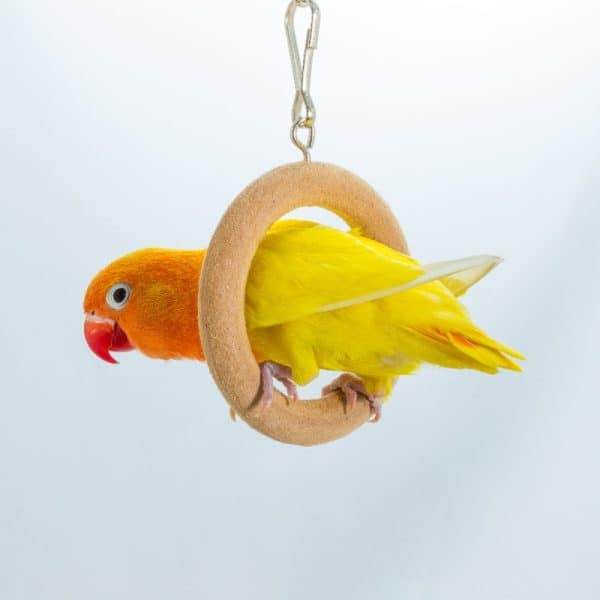
How Can I Get My Parakeets to Eat Something Other Than Seed?
Last Updated on by Mitch Rezman
Birds that have been only given one food for all their lives are harder to convert to a better diet but it can be done with time and patience.
A wide flat dish with chopped veggies, mashed carrots, squash, and a big hunk of green romaine lettuce placed on the center of the bottom of their cage every day for a month should get them rolling. Sprinkle the plate with some sed, and take out their main dish for a few hours after placing the fresh food dish in the cage.
Here is just one option using bird bread to get them to eat pellets.
Quick Tips for Conversion to Pellets of any Kind.
Hide the pellets in birdie bread (yes Martha, Jiffy Mix works just fine).
2. Change the bird’s environment. Try moving your bird to a new enclosure, such as a box, aquarium, or even a new cage. Remove all the toys, perches, and bowls and offer High Potency™ on a solid surface of the floor.
3. Use a mirror or white paper. Sprinkling food over a mirror or sheet of white paper placed on the bottom of the enclosure works especially well for budgies. A bird old enough to be socialized may eat to compete with the “rival” bird in the mirror. A white paper background may draw attention to the food particles.
4. Slowly “wean” your bird from seeds. In the evening, offer seeds from the food bowl for only 1 hour. Then, remove the seeds and replace them with High Potency. The next day, give your bird seeds for only 30 minutes in the morning and evening. On the third day, reduce the time to only 15 minutes twice a day. And finally, offer only High Potency™ on the fourth day. Watch the bird’s droppings.
5. Feed your bird at mealtime. Place the food on a plate, move it around with your finger or a spoon, and pretend to eat it in front of your bird.
6. Offer High Potency Mash or Adult Lifetime Mash. Birds love the taste of Power Treats™ and Pepper Lifetime Coarse.™ These foods can be crushed for smaller birds. Adult Lifetime Mash also has an appealing taste to help your bird try new food.
7. Use a converted bird as a role model. House your bird near another that’s already eating Harrison’s Bird Foods, or use a “trainer bird” in the same cage as a role model for eating.
8. Heat (warm) or moisten the food. Warm the High Potency slightly or moisten it with a small amount of fruit juice or other liquids.
9. Schedule a supervised diet change with your veterinarian. Some birds do not recognize Harrison’s as food, and placing the bird in a clinic where monitoring can be done will help keep your bird healthy through the conversion.
If the conversion steps don’t work the first time, you can feed the familiar food for a short time and then try again. The effort is worthwhile for the long-term health of your bird.
The bird’s weight (in grams), body condition, attitude, and droppings should be monitored carefully on a daily basis in small and medium birds and at least twice a week in large birds.
I hope for the best.
Catherine
Author Profile

Latest entries
 Bird & Parrot CareJune 20, 2025Understanding the Best Way to Use Prevue Pets Mimic Me Voice Trainer
Bird & Parrot CareJune 20, 2025Understanding the Best Way to Use Prevue Pets Mimic Me Voice Trainer Bird BehaviorJune 6, 2025How Do I Keep My Parrot From Dumping His Food Every Day?
Bird BehaviorJune 6, 2025How Do I Keep My Parrot From Dumping His Food Every Day? Birds & LightingMay 16, 2025I Am Seeking Clarity About Lighting for My Birds Cage
Birds & LightingMay 16, 2025I Am Seeking Clarity About Lighting for My Birds Cage Bird RescueApril 29, 2025How Do We Re-Home a 17 yr Goffin Cockatoo?
Bird RescueApril 29, 2025How Do We Re-Home a 17 yr Goffin Cockatoo?


